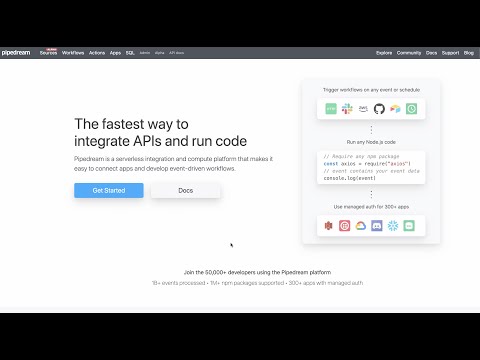What do you want to automate
with PagerDuty and UptimeRobot?
Prompt, edit and deploy AI agents that connect to PagerDuty, UptimeRobot and 2,800+ other apps in seconds.
Trusted by 1,000,000+ developers from startups to Fortune 500 companies
Popular Ways to Connect PagerDuty with UptimeRobot#
Popular PagerDuty and UptimeRobot Actions#
Find the user on call for a specific schedule. See the docs here
Update an existing monitor's status to pause or resume monitoring. See the documentation
Overview of PagerDuty#
The PagerDuty API offers a powerful interface to automate your digital operations management. By leveraging its capabilities on Pipedream, you can create workflows that respond to incidents, automate alerts, and synchronize incident data across various platforms. PagerDuty's API enables you to manage services, teams, and incidents, ensuring that your systems remain operational and that the right people are notified at the right time.
Connect PagerDuty#
import { axios } from "@pipedream/platform"
export default defineComponent({
props: {
pagerduty: {
type: "app",
app: "pagerduty",
}
},
async run({steps, $}) {
return await axios($, {
url: `https://api.pagerduty.com/users/me`,
headers: {
Authorization: `Bearer ${this.pagerduty.$auth.oauth_access_token}`,
"Accept": `application/vnd.pagerduty+json;version=2`,
},
})
},
})
Overview of UptimeRobot#
The UptimeRobot API allows you to monitor the uptime of websites and services, sending alerts for any downtime detected. With Pipedream, you can harness this API to create tailored notifications, generate uptime reports, and synchronize with incident management tools. By leveraging Pipedream's capabilities, you can integrate UptimeRobot with a myriad of services to automate responses to uptime changes, streamline communication processes, and maintain a pulse on your web infrastructure's health.
Connect UptimeRobot#
import { axios } from "@pipedream/platform"
export default defineComponent({
props: {
uptimerobot: {
type: "app",
app: "uptimerobot",
}
},
async run({steps, $}) {
const data = {
"api_key": `${this.uptimerobot.$auth.api_key}`,
}
return await axios($, {
method: "post",
url: `https://api.uptimerobot.com/v2/getAccountDetails`,
data,
})
},
})
Related Videos#
